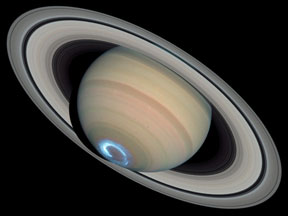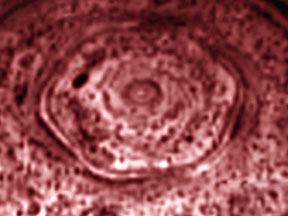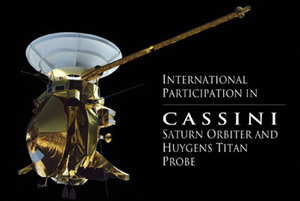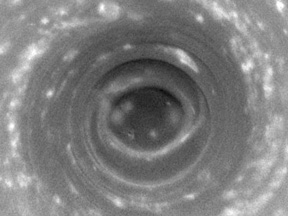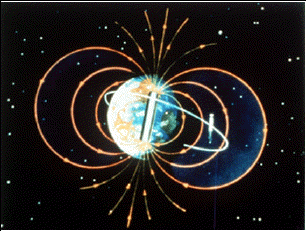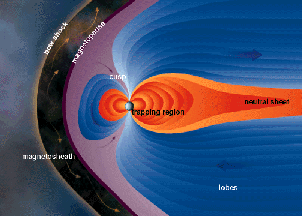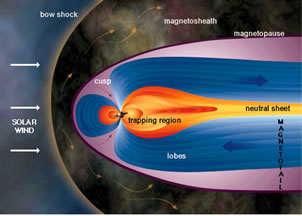Click on image for full size
Image courtesy of NASA, ESA, J. Clarke (Boston University), and Z. Levay (STScI).
The Poles of Saturn and Its Moons
There's a lot of strange and interesting stuff going on at both the North and South Poles of Saturn. Two of Saturn's moons also have interesting polar regions. Let's take a look!
The atmosphere and clouds are quite odd at both of Saturn's poles. Scientists first spotted a strange hexagonal pattern around the North Pole in the 1980s. In 2006, the Cassini spacecraft found a weird "hurricane-like" storm swirling around Saturn's South Pole.
Saturn, like Earth and some other planets, has a magnetic field. On most planets the magnetic field is not quite lined up straight with the planet's spin axis. Saturn is unusual in this way. Its spin axis is almost perfectly aligned with its magnetic field. The two are only 1° apart. For comparison, Earth's magnetic poles are tilted about 11° away from its geographic poles. On the planet Uranus, the tilt angle is almost 57°!
Saturn's magnetic field steers swarms of high-energy subatomic particles towards the planet's magnetic poles. When these particles hit gas molecules in Saturn's atmosphere they produce the glowing light of the aurora. Saturn, like Earth, has Southern and Northern Lights!
There are interesting poles on some of Saturn's moons, too. Titan is Saturn's largest moon. It has frigid lakes of liquid natural gas at each of its poles. Astronomers have also spotted clouds near Titan's poles. Maybe rain from those clouds fills up the polar lakes.
Enceladus is one of Saturn's mid-sized moons. The South Pole of Enceladus is another interesting place. Long "tiger stripe" features on the surface are much, much warmer than other places on this icy moon. There are even geysers that spew ice high into the sky above the South Pole of Enceladus.


